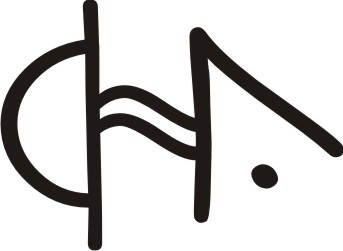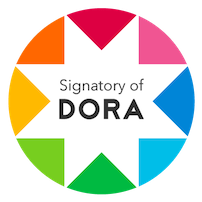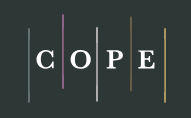Normas para autores
To make the publication effective, the following recommendations of the Editorial Committee must be complied with:
The author must send his article for evaluation, after being accepted, he must complete the presentation of the following notes:
Publication authorization, publication sheet and declaration of originality of the article. Once the notes have been sent to the committee, the articles will be disseminated.
AUTHORS GUIDE
AUTHORIZATION OF USE OF IMAGES
AUTHORIZATION SHEET FOR PUBLICATION OF ARTICLES
ORIGINALITY AND AUTHORIZATION TO PUBLISH
Text format: The text sent must be in Microsoft Word (doc or docx) A4 format. The font size for the body of the text is 12 points; The font is Times New Roman. Paragraphs will have single line spacing. Indents of any kind will not be used in the body of the work. Therefore, the paragraphs are separated by a space. It also does not carry cuts, or page breaks.
Margins: top and bottom 2.5 cm. And the left and right 3.5 cm.
-Texts with notes at the end of the work will not be accepted.
-Title in English, centered (Times New Roman 12 italics).
-Keywords: Four (4) lowercase italics, Times New Roman 10, translated into English (translation into Portuguese, French, and Russian will be done by the official translators of the Institute of Art History).
-Abstract: It must have a minimum of 100 and a maximum of 200 words in a single paragraph and must appear in Times New Roman 10 for the Spanish abstract and Times New Roman 10 italics for abstracts in other languages. It must describe the topic of the work, the methodology used, and its conclusions. It should not include interpretations or critiques, bibliographic citations, or references to figures or images from the text. A translation of the abstract into another language (English) must be included. If significant words from the text are used in the abstract, this will aid online retrieval.
-Author Information: The author's information, including institutional affiliation without abbreviations (full names), country, and email address, must be included in Times New Roman 10 bold. The ORCID ID number (a unique and permanent digital identifier (ORCID iD)) must be included to distinguish the author's scientific and professional output, linking all activities (publications, awards, affiliations, etc.) to the author's profile. The author's personal information (CV) must be between 50 and 70 words in Times New Roman 10 bold, in a justified paragraph without indentations.
-Bibliography: The bibliography system will be the Chicago-Deusto system, in Times New Roman 11 bold, in a justified paragraph without indentations.
The texts: must be original and unpublished. They will have an extension of a minimum of 10 pages. They may include notes, tables, images and figures. They will be presented in A4 format, Times New Roman 12 font, justified, single spacing for the body of the text and Times New Roman 10, justified, single spacing for footnotes (texts with notes at the end of the work will not be accepted) . They will be organized in sections whose headings will be written numbered, in Times New Roman 10, centered and in italics, in addition the pages must be numbered consecutively.
QUOTES:
Appointment Style: Chicago-Deusto: It is the appointment system that should be used. It is used in footnotes. The bibliography will be placed at the end of the article. It is one of the styles most used by the humanities, literature, history and the arts. The Chicago - Deusto system will be used in: Notes and Bibliography.
Footnotes (citations): must be in Times New Roman 10, must be numbered consecutively. They will be detailed starting with the name and surname, Title of the article (Place: Editorial, year), 6-10.
Bibliography: the references of each article will appear at the end of the article, ordered alphabetically, (Times New Roman 11) authors' surnames and then name, Title. Place: Editorial, year. With single line spacing.
Citations for images, illustrations, figures and tables will be incorporated with their corresponding data of the author or copyright: that is, when including an image of your own or of another author, the image must be inserted and then below, the following will be placed in the epigraph. corresponding data (to the image: author, title, date, etc.) and in the same epigraph the reference of the source will be indicated with a footnote, that is: if it is paper format the bibliographic references, and in the case of the virtual must indicate the place or site where the image is hosted, that is, the web appointment must be made with its respective link.
ITEMS THAT DO NOT MEET THESE SPECIFICATIONS WILL NOT BE PUBLISHED.
* NOTE -1: Translations in another language (Portuguese, French and Russian) are the responsibility of the CHA Translations Area, and will only be visible in CHA publications. Only titles (in Portuguese, French and Russian) will be taken into account for metadata. "The editorial team of the Art History Notebooks requests their authors to include the title, abstract and keywords in the original language of the work, Spanish and English as mandatory. Likewise, it reserves the right to include translations that it deems pertinent in another language of the respective metadata mentioned. "
* NOTE -2: The CHA does not charge publication fees under any circumstances.
Examples:
Books: Author or up to three authors, Title of the book in italics, (place of publication: publisher, year), and p./pp.
Diego PRO. "The being of the American", in: Cuyo, Yearbook of Argentine and American philosophy, (Mendoza: Institute of Philosophy, Faculty of Philosophy and Letters, National University of Cuyo, 1984), 20.
Articles:
Author, "Title of the article", in Title of the journal in italics, (place of publication: publisher, year), 2-44.
Quotations or Footnotes:
IBIDEM (without accent): Ibidem: means "in the same work". It is used when it is necessary to cite the same work previously referenced or to establish that it is "by the same author". It is used to cite an author who has already been referenced.
1 Erwin PANOFSKY. Gothic architecture and scholastic thought (Madrid: La Piqueta, 1986), 24.
2Ibid., 24.
OP. CIT.: Op. cit. means: (opus citatum) in the cited work Used to mention another page of a previously cited work, having intercalation of other references.
1 Josep Maria MONTANER. After the modern movement: architecture of the second half of the 20th century, (Barcelona: Gili, 1993), 43.
2 Hans IBELINGS. Supermodernism: architecture in the era of globalization (Barcelona: Gili, 1998), 123.
3 Josep Maria MONTANER. op. quote, 105
internet dating:
Lewis CAROLL, Alice's adventures in wonderland, (Germany: Dortmund, 1994), http://www.germany.eu.net/books/carroll/alice/html.
Rules for the use of images: for the selection, production and sending of images and graphic material, and that this matter is reproduced with good quality. The images used by the authors can be: photographs, drawings and illustrations, as well as graphs, maps, tables, diagrams, and infographics, among others. To carry out the publication, you must first have all the necessary permissions (copyright). For this, a list of images must be delivered (in a Word file) where it appears for each image:
- Number (in order of appearance) and name of the image and author: with their corresponding authorization. Or the source of free movement (provided that these are not subject to copyright).
- Source or author's permission (in annex: that is, the author of the work or its owners must authorize its use in writing, (note format is attached).
Digital Images are divided into four categories:
- Conventional artwork that has already been digitized on a professional quality scanner.
- Good quality and resolution digital photos, preferably taken by professional photographers.
- Digital illustrations, that is, drawings created with computer programs.
- Works of artistic production.
The images must have a resolution of 300 dpi and have the metric dimensions in which they will be reproduced. Images in TIFF and JPG format will be accepted. Low readability or low resolution images will not be accepted, they must be in the body of the text, but with the corresponding resolution and quality.
Mandatory notes to present: 2 (two) notes will be requested from the authors in relation to the images they use. Once the author has received the notification of approval of its publication, he must send the following notes within a maximum time of 7 days from the receipt of its notification. These notes must be completed by the author or authors in order to be published in the CHAs with their corresponding signed authorizations. (They must be printed and completed legibly and in print, then they will be signed in blue. Once the note is completed, it must be scanned with good resolution to be sent to the publisher).

















_00.07_.55_2.png)





